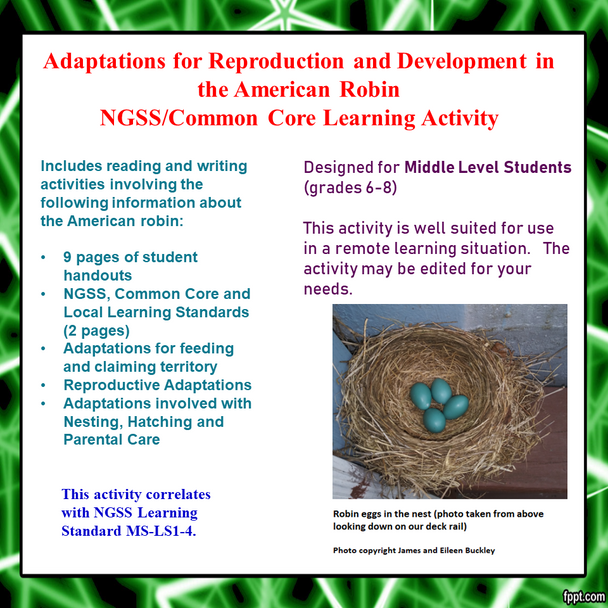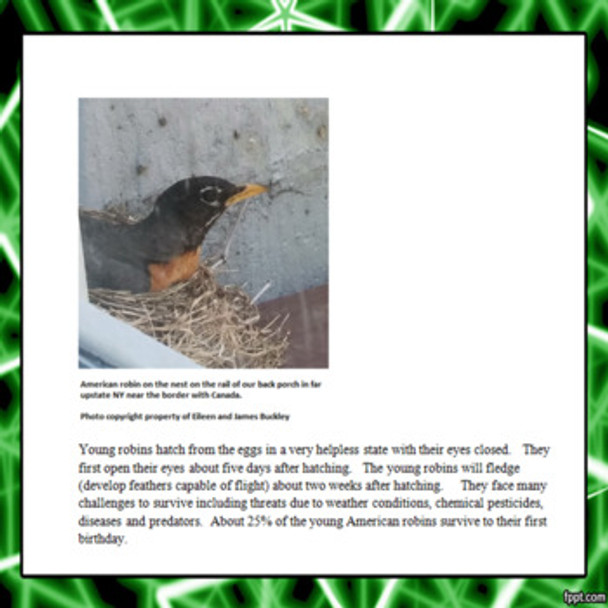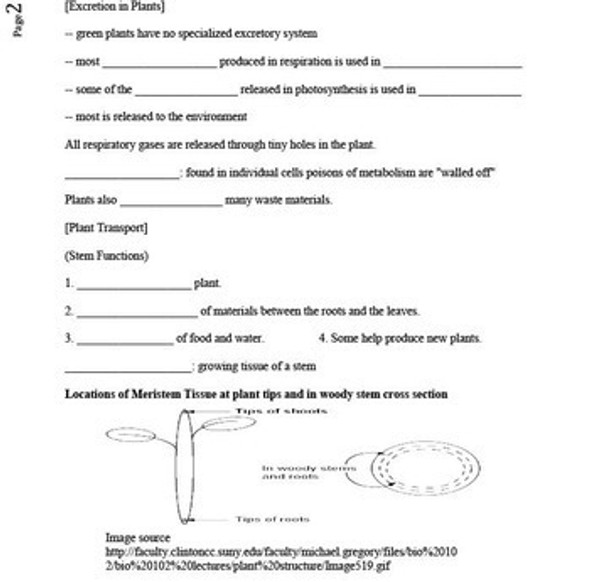Description
The Adaptations for Reproduction and Development in the American Robin NGSS/Common Core Learning Activity provides 9 pages of reading with questions following each major section to teach and reinforce student understandings in reference to NGSS Learning Standard MS-LS1-4. Topics addressed include adaptations for feeding, reproduction, nesting, hatching and defense of the territory and nesting sites in the American robin. Other topics such as courtship displays as well as internal and external fertilization are addressed.
25 questions requiring the students to read and synthesize information are part of this activity. The specific learning standards and objectives addressed in this activity are listed below.
This activity includes an answer key. It is included in word and pdf formats to allow you to edit the activity for your needs. This activity can be easily adapted for remote learning situations with a minimum of effort.
Learning Standards and Objectives Addressed in this Activity
NGSS Learning Standard
MS-LS1-4. Use argument based on empirical evidence and scientific reasoning to support an explanation for how characteristic animal behaviors and specialized plant structures affect the probability of successful reproduction of animals and plants respectively.
Common Core State Standards Connections:
ELA/Literacy
RST.6-8.1 Cite specific textual evidence to support analysis of science and technical texts.
RST.6-8.2 Determine the central ideas or conclusions of a text; provide an accurate summary of the text distinct from prior knowledge or opinions.
RI.6.8 Trace and evaluate the argument and specific claims in a text, distinguishing claims that are supported by reasons and evidence from claims that are not.
WHST.6-8.1 Write arguments focused on discipline content.
WHST.6-8.2 Write informative/explanatory texts to examine a topic and convey ideas, concepts, and information through the selection, organization, and analysis of relevant content.
Learning Objectives
Upon the completion of this activity involving the American robin the student will be able to:
1. discuss how feeding in flocks increases the probability of robin survival.
2. discuss "running and stopping" feeding behavior in robins.
3. discuss courtship behaviors in robins.
4. discuss how male robins defend their territory.
5. discuss how the robin parents defend the nesting site and their offspring.
6. explain the difference between external and internal fertilization.
7. describe the treading technique of internal fertilization in robins.
8. state the roles of the egg shell and yolk in the survival of the developing robin in the egg.
9. discuss the typical locations and materials used to make a robin nest.
10. describe the size and shape of the robin nest.
11. state two major functions of the robin nest.
12. describe the process involved in providing adequate nutrition for the young robins.
13. discuss two ways the parent robins keep their nest clean.
14. state two reasons the robin nest must be kept clean.
15. list several challenges faced by young robins in their attempt to reach adulthood.


















